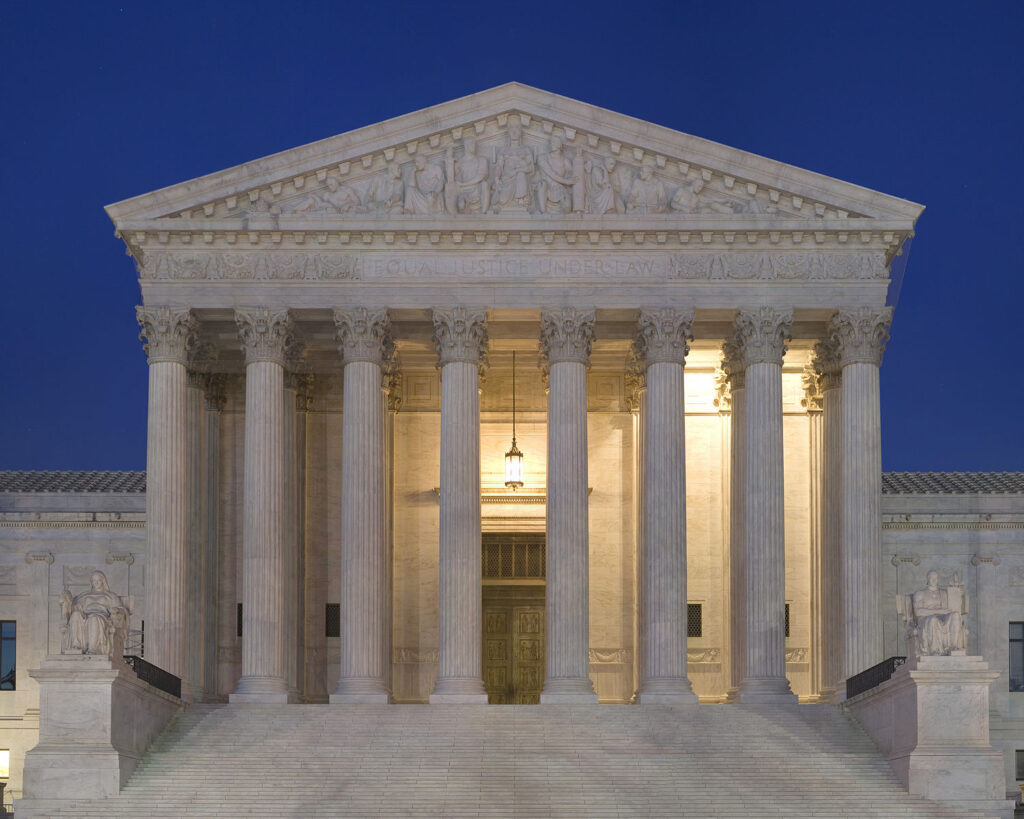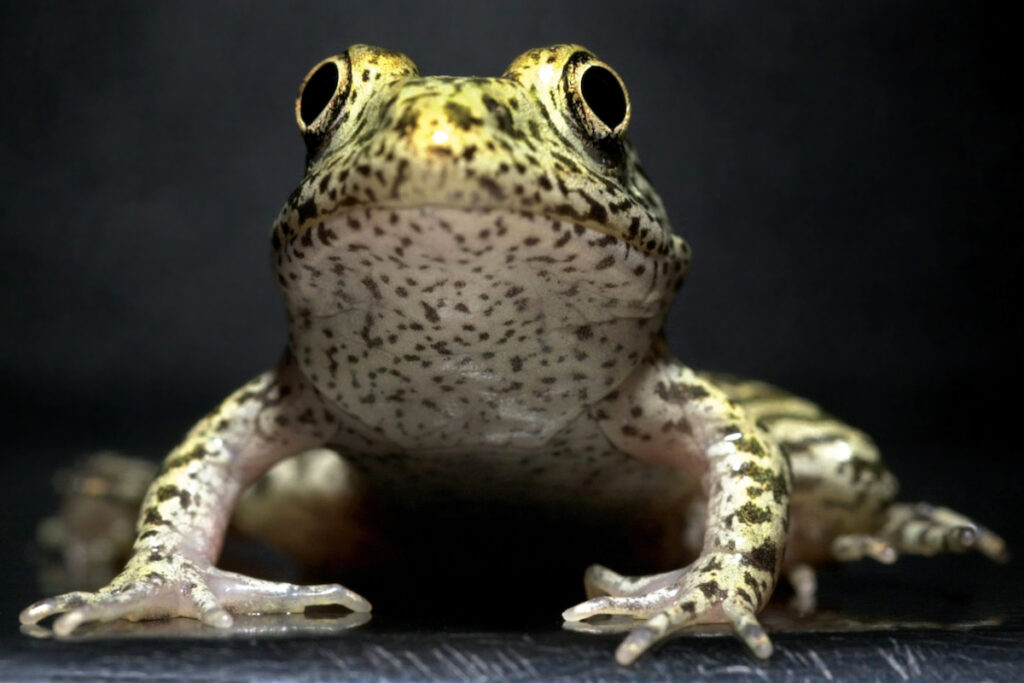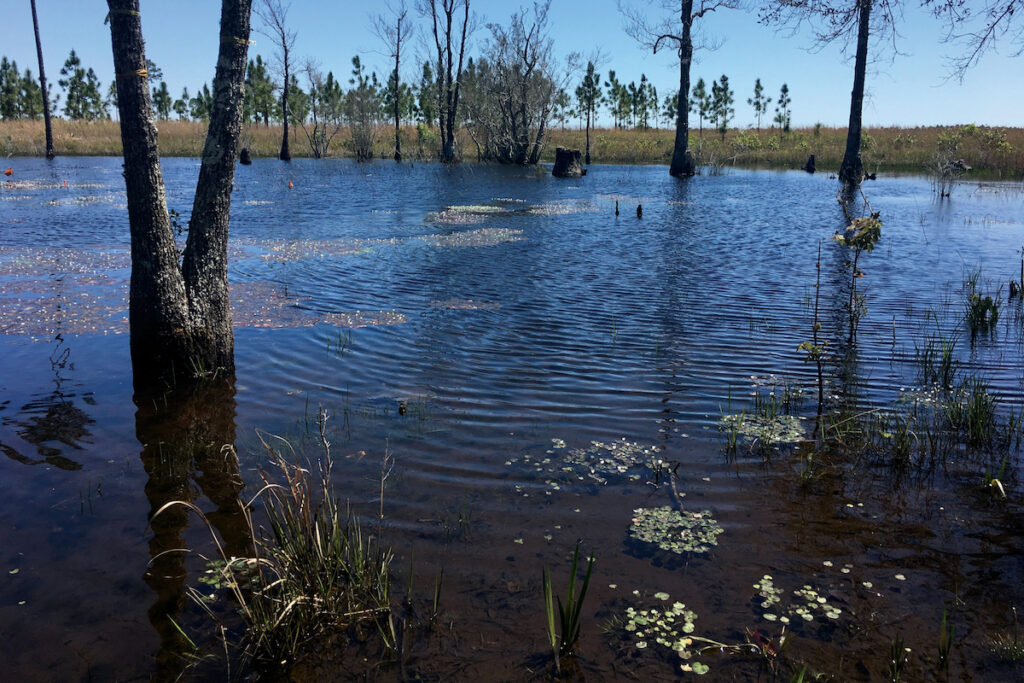Today, the Supreme Court hears Weyerhaeuser Co. v. Fish and Wildlife Service, a case that highlights shortcomings of the Endangered Species Act and will set a precedent regarding the government’s scope for making critical habitat designations under the act. Here are the basics about the case.
What is the Supreme Court deciding?
The court is weighing two questions. The main issue at hand is straightforward: Does critical habitat have to be habitable in its current state? (Or, as the court officially puts it: “Whether the Endangered Species Act prohibits designation of private land as unoccupied critical habitat that is neither habitat nor essential to species conservation.”)
The second legal question will address whether “an agency decision not to exclude an area from critical habitat because of the economic impact of designation is subject to judicial review.”
Who’s involved in the case?
There are a handful of parties involved. On one side, the Fish and Wildlife Service is defending its designation of critical habitat for the endangered dusky gopher frog on private land in Louisiana, with intervenors the Center for Biological Diversity and the Gulf Restoration Network joining it.
On the other side, timber company Weyerhaeuser is arguing that the designation was an overreach of the government’s authority. Weyerhaeuser leases and operates the timberland in question, the majority of which is actually owned by New Orleans resident Edward Poitevent and his family, officially known before the court as Markle Interests, LLC, et al. Twenty states also jumped in on the side of the landowners, worried about the precedent set by the critical habitat designation.
How did we get here?
The affair goes back about seven years, when the Fish and Wildlife Service designated roughly 1,500 acres of Poitevant family land in St. Tammany Parish, Louisiana, as critical habitat for the dusky gopher frog. The agency made its designation even though the land, under a long-term lease for commercial timber production, isn’t in its current state suitable for the frog—which hasn’t inhabited the state of Louisiana for about 50 years.
As I outlined in the latest issue of PERC Reports:
In 2011, when the Fish and Wildlife Service initially proposed the critical habitat designation for the frog, it only included areas in Mississippi. But as the agency later noted, biologists enlisted to review the proposal indicated that it “was inadequate for the conservation of the dusky gopher frog” and recommended a reassessment to include the species’ historical range in Louisiana and Alabama.
… With all existing frogs concentrated in southern Mississippi, the agency worried that a catastrophic event like a region-wide drought could wipe out the species.
Poitevent contends that government biologists then trespassed on his land to scope it out during the reassessment. Regardless, the agency determined that five ephemeral ponds exist in the area. It ultimately included 1,544 acres of Poitevent’s family property in its final designation due to “the importance of ephemeral ponds to the recovery of the dusky gopher frog.” Yet even as it deemed the Poitevent land “essential” to conserving the frog, the agency’s final rule also conceded that “the surrounding uplands are poor-quality terrestrial habitat for dusky gopher frogs” given that they lack the open-canopied longleaf ecosystem the frog requires.
Why did the Fish and Wildlife Service deem this particular land to be critical?
The dusky gopher frog needs three elements to survive: ephemeral ponds for breeding, upland forests with open canopies, and habitat that connects the two. The Fish and Wildlife Service found that the Poitevent land has only one of the elements, but it’s a rare and crucial one: the ephemeral wetlands.
During the agency’s review of its initial 2011 habitat proposal, a biologist familiar with the land from his time working at a Louisiana university suggested the agency take a closer look at the parcel. It found five ephemeral ponds and decided to include 1,544 acres of land surrounding them in its final critical habitat designation.
The landowners have argued that the frog can’t survive on the land, given it has only one of the three necessary elements for the amphibian. The frog has not been documented in Louisiana in half a century, and given that the land is now a dense timber plantation full of loblolly pines, it’s a much different ecosystem from the open-canopied longleaf pine ecosystem the frog inhabits. (Hundreds of years ago, there were about 90 million acres of longleaf pine across the South; after centuries of human development, only about 2 million of those acres remain.)
Lower courts ruled with the Fish and Wildlife Service, deferring to its authority to designate critical habitat. Now the highest court will weigh in.
What is the effect of the critical habitat designation in St. Tammany Parish?
For the time being, the designation doesn’t change much of anything on the ground. The land is under a long-term timber lease to Weyerhaeuser, and in general, timber harvesting is not affected by a critical habitat designation. That’s one reason attorneys from the Center for Biological Diversity argued that the designation is sound, saying that the landowners “would experience no economic impacts if they continued to use the land as pine plantations.”
For the landowners, the fundamental issue is the uncertainty the designation brings. The owners and Weyerhaeuser’s real-estate arm had the land rezoned a few years ago for a mix of development purposes. The area is about an hour outside of New Orleans and in a fast-growing part of the state.
If the property owners want to transform the land from timber to development, they’ll likely need a federal permit given that there are wetlands in the area. Because the land has been designated as critical habitat, the need for such a permit would trigger “consultation” with the federal government. The consultation process would ultimately determine how and how much of the land could be developed. The Fish and Wildlife Service’s own economic analysis estimates that the landowners would forego $34 million in value if they’re prohibited from developing the entire parcel.
But there is a lot of uncertainty around that figure. It would first hinge on any planned development actually impacting wetlands and thereby triggering federal consultation. And it would ultimately depend on the result of that potential consultation, which is not entirely clear. The Fish and Wildlife Service examined one hypothetical scenario under which 40 percent of the land would be allowed to be developed and 60 percent would be left as frog habitat. In that case, the estimated economic loss to the landowners would be $22 million.
So what’s in it for the frog?
There’s clearly a lot at stake in how the Supreme Court rules in the case and the precedent it will set. But as I’ve noted repeatedly, the pity of this saga is that neither possible ruling is likely to help the frog at all. As I put it in PERC Reports:
The great shame is that regardless of the Supreme Court’s ruling, it seems the frog will not benefit one iota. The Louisiana landowners don’t have the inclination nor the resources to establish proper frog habitat, and the government admits its authority to designate habitat cannot compel anyone to take any further steps toward species recovery.
The court seems bound to fail the dusky gopher frog, but that’s only because the Endangered Species Act has failed it already. Private landowners provide the majority of habitat for vulnerable species, yet the law is more likely to pit them against a rare amphibian than to align their incentives with it. That’s a huge failing, particularly because the prospect of species recovery is already so incredibly difficult:
Just ask the Nature Conservancy. An hour or so east of St. Tammany Parish, the organization has been trying for more than a decade to repopulate the dusky gopher frog in Old Fort Bayou, Mississippi. It has restored hundreds of acres of longleaf pine, conducted annual prescribed burns, and established a lab that raises tadpoles and frogs to be re-released into ponds. “It’d be cool if private landowners could do something like this and get credit for it,” says Becky Stowe, director of forest programs for the Nature Conservancy in Mississippi.
… To date, the Nature Conservancy has released nearly 10,000 tadpoles and frogs at its pond in Old Fort Bayou, yet its biologists estimate the adult population at only 50 dusky gopher frogs. Even when everyone is pulling in the same direction, recovering endangered species is a slog.
The dusky gopher frog is having its day in court. If we can find ways to give landowners better incentives to become collaborators in conservation, the frog will also have many more days in the forest.






